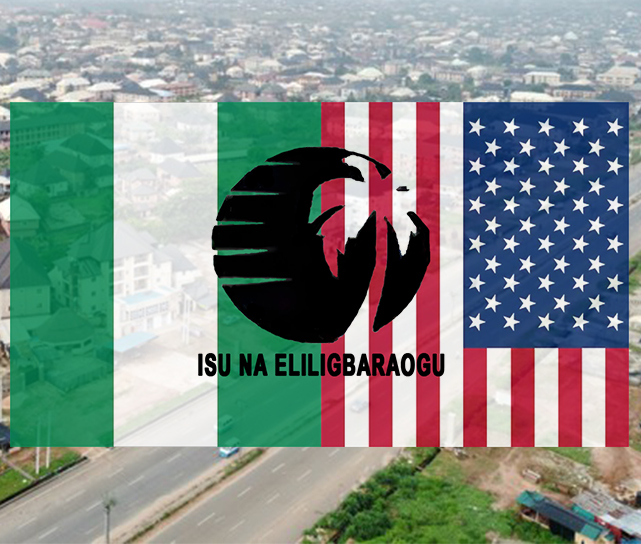ISU HISTORY IN BRIEF
The town Isu is currently located in the present Nwangele Local Government Area of Imo State. The town belongs to the former Isu Sub-tribe located, within the former Orlu District of Okigwe Division in the old Owerri Province. Geographically, Isu town lies on a gently up-lifted area nearly 13 miles south of Orlu Urban area. The town comprises of a total of thirty-eight wards generally grouped under three main villages-groups. With a total land area of more than twelve square-miles, the town has a population of well over 70,000 igbo-speaking inhabitants.
Like many pre-colonial Igbo communities, the traditions of origin of Isu people present many complexities. Nevertheless, this traditions which we cannot go into now because of lack of space, are very vital in a society inhibited by mass illiteracy in recording of the past events in the pre-colonial times. On origin, it is most accepted that Isu the founder of the town that bears his name had two sons, ELILI and GBOROGU, who later became popularly known as Eliligborogu. These two sons later formed the nucleus from which emerged the three component parts of Isu town.
Today, Isu people very much relish the popular name “ISU-NA-ELILI-GBOROGU”. The people also talk of ISU-KPOMKWEM, a term that signifies that they originated in their present abode. This fact is supported by the belief that Amaigbo is located immediately North of Isu in the “Ritual Street” of the Igbos especially the southern Igbos before their dispersal to ikwerre areas and parts of present day Akwa-Ibom State and Arochukwu Areas. The longevity of Isu town can also be testified from the fact that both the former Isu-tribe and Isu clan were named after Isu and the fact that early Igbo traders who travelled beyond Owerri to Ikwerre areas were generally called ISU-AMA (ISOMA). Finally, Isu town is located almost in the heart of the hypothetical Igbo dispersal focus which lies within the Awka-Orlu Owerri-Okigwe axis.


With the exception of few observed internal and external migrations, the people of Isu appear to have settled in their present boundaries between the period 500 B.C. and 500 A.D. While settled, the people organized their government to the best of their ability making use of such organized groups as the Okonko and Aladinma as well as Ozo for both legislative and judicial functions, while their age grades stood as the Executive arm of government. There were such festivals as Nta and Amuma while inter group relations were cemented through competitions, sports and marriages, as well as blood pacts.
Isu early history was not only that of a golden age. For various reasons the town did quarrel and even went to wars with her neighbors. Infact it was as a result of one of such wars arising from a protracted land dispute with a neighboring towns that Isu people founded and established the Nkwo-Onu-Mmiri market by the western bank of the Nwangele stream. The second interpretation of Is na Eliligbaraogu was that Isu people were warriors, unconquered in many of their battles that Isu and all associates with Isu (Elili) fought wars without fear (Gbaroagu). Some call it 15U NA MBA OGU.
However, whenever such wars broke out, concerted efforts were made by all concerned to work for the return of peace, which at times were attained through blood pacts (Igbandu). Economic activities featured prominently, among which were agriculture (farming) and trading. It was because Isu people were active traders that our early ancestors did actually come in contact with the daring Aro traders. In fact, history has it that both the Isus and the Aros signed trade pacts and entered into blood covenants, promising not to attack one another, and to co-operate in protecting trade routes, especially during the fearful days of the slave trade. Other notable economic activities of Isu were in areas of smiting, crafts, hunting and animal husbandry.
Ozo titles and Ozo title taking in Is in pre-colonial times commanded great respect influence and prestige. There were three distinct types of Ozo (1) Ozo Ndishi, (2) Ozo Onumonu and (3) Ozo Ikwannuji. Ozo title holders commanded so much respect and that they were generally regarded as the people’s spokes-men. Like many other aspects of our traditional life Ozo has been affected by the advent of Western culture especially Christianity and this has given rise to the present day “Ozo-Church”. But the holders of such “Ozo-Church” in Isu town no longer have the Ofo-Ozo which is the stamp of authority of Ozo title holders. Therefore, the Ozo institution in Isu is very dynamic and despite all odds, has survived till this day.
Like other parts of Igbo land, Isu town witnessed the gradual passage of the old good days following colonial advent, effectively from 1900. The early Europeans were followed by the various Christian missionaries which helped to prepare the minds of our people for the subsequent political domination of our people. Isu people also joined those who accepted the Christian teaching through two main religious sects(1) the Anglican church, brought into Isu town through the religious zeal of Chief Obasi and (2) the Roman Catholic Church through the pioneering works of the lion-herated Akano Ohaeje (Ezerioha II of Isu).
In an attempt to pacify the people, the early colonial masters created the office of warrants chiefs. In Isu town, the Warrant fell on the erstwhile Akano Ohaje (Ezerioha II of Isu), a man unanimously presented by his people, the Isu people to the colonial officers for recognition. It was Akano Ohaeje who for sometimes held the key to the sub-treasury at Mgbabo-Ano. Astute, very intelligent and fore-sighted, Akano Ohaeje led his people till his death in 1940, the same year that Isu people again unanimously crowned his first son Francis Agummadu Akano Eze Isu, as Ezerioha III of Isu. From 1940 to 1992, Eze F.A Akano (Ezerioha III of Isu) was on the throne majestically for 52 years, hence the Golden Jubilee Celebrations which we are all cannot forget easily.
After Eze Francis Akano’s death in 1992, his first son HRM Eze (Dr) Edward FNI Akano OFR, ascended the throne as Ezerioha IV and Durukparakatam of Isu Ancient Kingdom. Umuoza Isu in 1978, broke off from Isu as an autonomous Community during the reign of Eze Francis A. Akano. Other four more autonomous communities were created about ten to twelve years after the death of Eze Francis A. Akano. These autonomous communities are Umurakara, Isiala Umuozu, Dum-na-Name and Umunna, thus making a total of six autonomous communities In old Isu, now/ Called Isu na eliligbaraogu: Isu Ancient Kingdom, Umuozu, Umunakara, Istala Umuozu, Umunna and Dim-na-Name.

Courtesy of
HRM Eze Dr Edward Njemanze Iheanyichukwu Akano (Ezerioha lV & Durukparakatam of Isu Ancient Kingdom, KSJİ, OFR)
